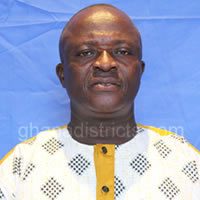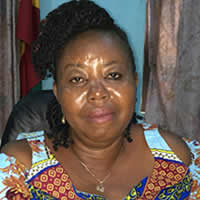Political Structure of Atwima Mponua District Assembly
The Atwima Mponua District Assembly derives its authority as the highest administrative and political body exercising deliberative, legislative and executive functions from the Local Governance Act, 2016 (Act 936). The Assembly was established by Legislative Instrument 1785 (December 2003). The District has one constituency and 38 Electoral Areas.
The Assembly currently has 57 Members consistingaDistrict Chief Executive, Member of Parliament, 38 Elected Assembly Members from 38 Electoral Areas and 17 others appointed by the Government in consultation with the Traditional Authorities and other Opinion Leaders in the District. The Member of Parliament is an Ex-officio Member with the Heads of Departments providing technical direction for policy formulation and implementation. The District Chief Executive is both the political and administrative head of the District.
The Executive Committee serves as the executive and co-coordinating body of the Assembly. It consists of 15 members made up of Sub-committee chairpersons and other appointees, and is chaired by the District Chief Executive. The District has 190 Unit Committee Members from the 38 Electoral Areas with five members per Electoral Area as specified in the LI, 1961 of 2009.
The Presiding Member presides over the business of the Assembly and is elected for a two-year term. He/She is responsible for the deliberative functions of the Assembly and is supported by seven other Sub-committees namely: Finance and Administration, Development Planning, Social Service, Works, Justice and Security, Environmental and Disaster, and Agriculture Sub-Committees.
There is also a Public Relations Committee and a Client Service Center to receive and address complains and concerns of aggrieved persons against actions of members and staff of the Assembly. This committee is chaired by the Presiding Member. Politically, there are about 252 individuals serving various political capacities in the District and their collaborations have helped the development in diverse ways.
Administrative Structure of Atwima Mponua District Assembly
The administrative machinery of the Assembly comprises of the Central Administration which consists of the General Administration, the District Planning Unit and Budgeting Unit, the Finance Department, Works Department, the Environmental Health Unit, the Statistical Service Department and the Internal Audit Unit. The following Civil Service Departments, Agencies and Sub-vented organisations exist in the District with staff strength of about 233. The Department of Co-operative, National Service Secretariat, Stool Lands, Town and Country Planning, Information Service, Ghana Health Service, Ghana Police Service, Statistical Service, Ghana Education Service, National Disaster Management Organisation and National Commission on Civic Education.
With the enactment of LI 1961, 2009, the District is supposed to have 11 Departments but currently there exist 10 Departments namely: Central Administration, Finance, Education, Youth and Sports, Health, Agriculture, Works, Social Development, Trade and Industry (BAC), Birth and Death Registry, Physical Planning and Disaster Prevention. Only the Natural Resources Conversation Department operates from the Atwima Nwabiagya District with no established department in the District.
The District has put in place 11 Advisory Committees to provide advisory roles to the District Chief Executive on policy matters relating to service delivery and specific programmes. These include: District Security Committee (DISEC), District Education Over-Sight Committee (DEOC), District Tender Committee (DTC), District Statutory Planning Committee (DSPC), District Health Committee (DHC) and District AIDS Committee (DAIDSC). The rest are District Child Protection Committee (DCPC), District Advisory Board on Disability (DABD), District LEAP Implementation Committee (DLEAPIC) and District Implementation Committee on School Feeding Programme (DICSFP).
A number of specialised institutions and agencies are established in the District to complement the District Assembly in the provision of social and economic service to the people. These include Electricity Company of Ghana (ECG), Electoral Commission of Ghana (EC), District Magistrate Court, National Health Insurance Scheme (NHIS), Ghana Youth Employment Agency (YEA), Cocoa Agencies and National Centre for Civic Education among others. The relationship between the Assembly and these departments is consultative as shown in the organogram in Figure 1.11 and Figure 1.12 respectively.
Figure 1.11: Organogram of Atwima Mponua District Assembly
Source: DPCU-AMDA, 2017
Figure 1.12: Organogram of Sub-committee of Atwima Mponua District Assembly
District Substructures (Town/Area Councils)
The District is divided into Town and Area Councils, depending on the population and land area. A compact settlement or town with a population of 5,000 or more qualifies to have a Town Council status. An Area Council is made up of two or more towns with a combined population of 5,000 or more. Based on this, the District has one Town Council and 11 Area Councils with total communities of 310. Table 1.13 shows the details of Town/Area Councils in the District.
Social Accountability (Involvement of TA, Community, Citizen Participation)
The programmes and projects planning in the District occur at two levels: the Community and the District Planning Co-coordinating Unit (DPCU).
At the local level, communities organise general meetings where traditional authorities and community members discuss and evaluate their development needs. Through these consultations, communities are able to select their priority needs by consensus. At such forum, the people also discuss the various demands that they can contribute toward the execution of the programmes and projects in the form of finance, labour, materials and among others. It is worth noting that all the 12 Area/Town Councils have been trained in the skills of problem identification, project planning and facility management planning and have therefore some have their communities’ action plan with support from some NGOs (ICI, VSO, MOCA) working in the District. The key stakeholders in the district also participate in public hearings throughout the planning, budgeting and financial management processes of the DMTDP. This helped the communities to own the plan and will provide the necessary support for its implementation.
The communities’ needs and aspirations were identified at the community level using the assembly members and the unit committee members using the focus group discussion approach. These identified needs and aspirations were presented to the DPCU at the area council’s level for prioritization using the frequencies scoring approach.
The prioritized needs and aspiration were then grouped under programme areas for the purpose of preparing the programmes of action and the programmes-based budget.
Date Created : 11/24/2017 1:05:09 AM






 facebook
facebook twitter
twitter Youtube
Youtube TOLL FREE 0800 430 430
TOLL FREE 0800 430 430 +233 593 831 280
+233 593 831 280 GPS: GE-231-4383
GPS: GE-231-4383 info@ghanadistricts.com
info@ghanadistricts.com Box GP1044, Accra, Ghana
Box GP1044, Accra, Ghana